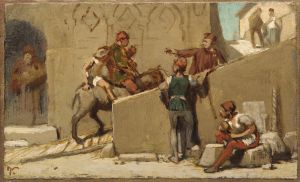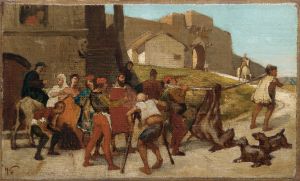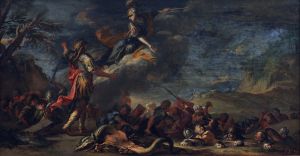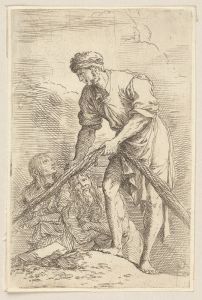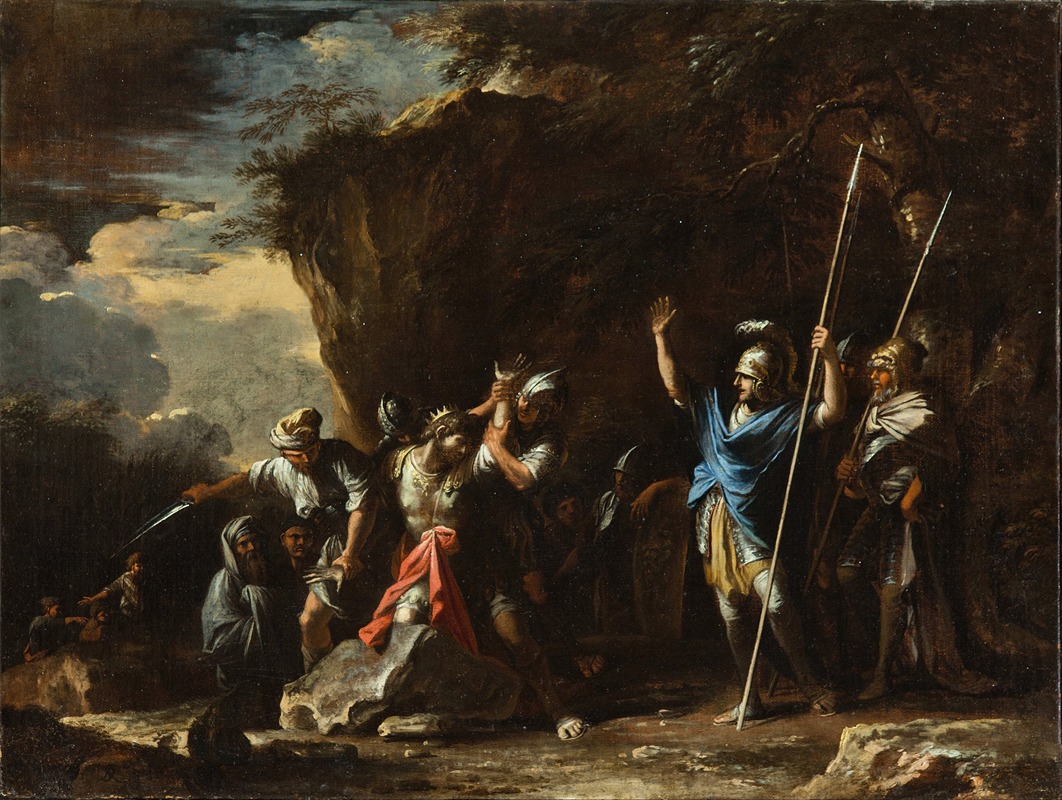
Scene from Greek history; The deaf-mute son of King Croesus prevents the Persians from killing his father
A hand-painted replica of Salvator Rosa’s masterpiece Scene from Greek history; The deaf-mute son of King Croesus prevents the Persians from killing his father, meticulously crafted by professional artists to capture the true essence of the original. Each piece is created with museum-quality canvas and rare mineral pigments, carefully painted by experienced artists with delicate brushstrokes and rich, layered colors to perfectly recreate the texture of the original artwork. Unlike machine-printed reproductions, this hand-painted version brings the painting to life, infused with the artist’s emotions and skill in every stroke. Whether for personal collection or home decoration, it instantly elevates the artistic atmosphere of any space.
"Scene from Greek history; The deaf-mute son of King Croesus prevents the Persians from killing his father" is a painting by the Italian Baroque artist Salvator Rosa. Salvator Rosa (1615–1673) was known for his dramatic and often darkly imaginative works, which spanned various genres including landscapes, portraits, and historical scenes. This particular painting is an example of his interest in historical and mythological subjects.
The painting depicts a dramatic moment from the life of Croesus, the last king of Lydia, who reigned from 595 to 546 BCE. Croesus is a historical figure known for his immense wealth and his eventual defeat by the Persian king Cyrus the Great. The specific scene illustrated by Rosa is derived from the writings of the ancient Greek historian Herodotus.
According to Herodotus, Croesus had a son who was mute from birth. During the conquest of Lydia by the Persians, Croesus was captured and sentenced to be executed by burning. As the flames began to rise, Croesus's mute son, in a moment of intense emotion and desperation, miraculously found his voice and cried out to the Persians to spare his father. This unexpected plea moved the Persians, and they decided to save Croesus from execution.
Rosa's painting captures the emotional intensity of this moment. The composition likely includes Croesus in a vulnerable position, possibly bound or surrounded by soldiers, with his son intervening at the critical moment. The artist's use of dramatic lighting and expressive figures would have been intended to heighten the emotional impact of the scene.
Salvator Rosa's works are characterized by their dynamic compositions and often turbulent atmospheres, reflecting the Baroque period's fascination with drama and emotion. His ability to convey complex narratives through vivid imagery made him a significant figure in 17th-century Italian art.
While the exact date of the painting's creation is not specified, it would have been produced during Rosa's mature period, when he was actively engaged in creating works that explored historical and mythological themes. The painting is a testament to Rosa's skill in storytelling through art, as well as his ability to evoke powerful emotional responses from viewers.
Overall, "Scene from Greek history; The deaf-mute son of King Croesus prevents the Persians from killing his father" is a notable example of Salvator Rosa's work, illustrating his talent for capturing dramatic historical moments with emotional depth and artistic flair.






